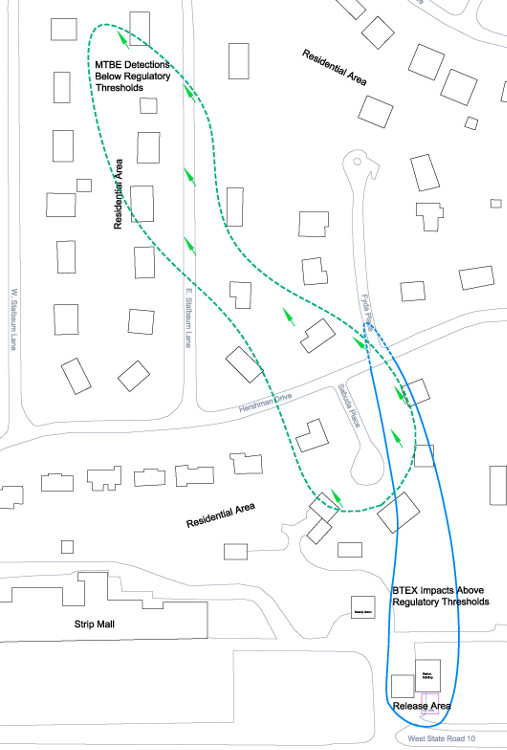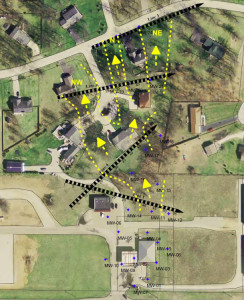Challenge
A historical petroleum release from an underground storage tank at a retail fuel station west of Wheatfield, Indiana threatened soil, groundwater, indoor air, and drinking water resources of a community of 10 small businesses, over 60 residences, and two schools. Since this community relies on private drinking water wells, the Indiana Department of Environmental Management (IDEM) identified the incident as “high priority” and assigned emergency status to the site. Due to the high potential for petroleum constituent exposure, Mundell was contracted to conduct a thorough, efficient, and cost effective investigation into the nature and extent of impacts.
Action
To focus subsequent subsurface and drinking water sampling strategy, Mundell geophysicists conducted geophysical investigations including on-site ground penetrating radar scanning and four off site 2D resistivity monitoring lines to identify potential migration pathways within the unconsolidated aquifer. The geophysical investigation results identified three natural preferential pathways of greater hydraulic conductivity beneath residential areas. Predicated on these results, Mundell conducted a targeted, thorough investigation into the nature and extent of soil, groundwater, indoor air, and drinking water impacts as a result of the release. Mundell scientists identified a source zone of benzene, toluene, ethylbenzene and xylene impacted soil near the station, from which a plume of benzene leachate, at concentrations three orders of magnitude above the relevant IDEM screening level, followed a north-south oriented migration pathway. Mundell investigated the northwest oriented migration pathway and discovered minor dissolved methyl tertiary butyl ether (MTBE) impacts at both groundwater and drinking water sampling locations over 1000 feet from the release area.
Results
Mundell used in-house geophysical investigation results to design an environmental sampling strategy for efficient and cost effective delineation of two distinct plumes of dissolved petroleum constituents. Achieving delineation enabled prioritization for remediation and the implementation of soil vapor extraction system to address source area impacts.

Plume impacts of historical petroleum release




